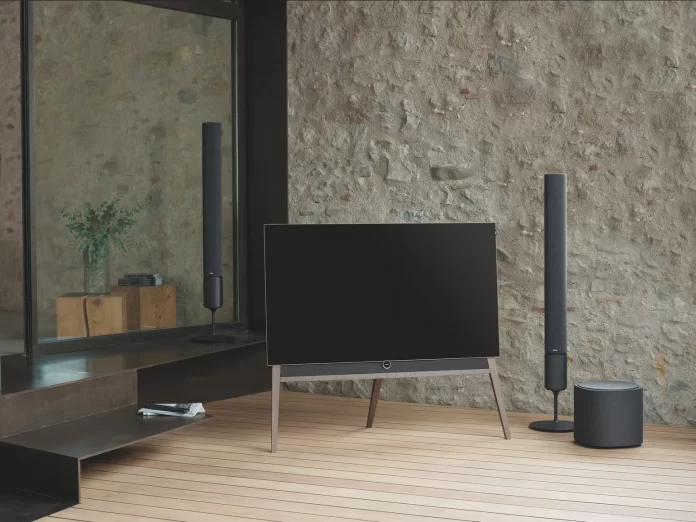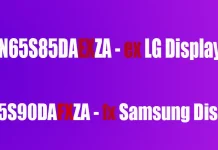Modern TCL TVs are equipped with many features to help you get the most out of your video content and only make your viewing experience easier. For example, you can easily enable or disable subtitles, voice assistant, adjust shadows and brightness, and more to make watching comfortable for you. This is especially true for people who watch original content from different countries in a foreign language.
Sometimes there are situations where you can get the buttons on the remote control mixed up. The fact is that the TCL TV remote control has both a subtitle button and a closed caption button. And if you see that your TV shows some subtitles instead of others, you can easily figure it out and fix the mistake. Well, let’s take a closer look at why closed captioning is displayed on your TCL TV instead of subtitles.
Why are subtitles needed to use?
Once a new film comes out, it’s not easy to get it translated. It’s even harder to do dubbing in the native language, so new films are often subtitled first and only then dubbed. Although many film lovers prefer to watch films in their original language to feel the emotions and action. Some people improve their foreign language skills because there’s no better practice than listening to native speakers.
Also, subtitles are the only option for people with hearing problems. Finally, subtitles can be present as a way to dub TV programs into the national language. Subtitle control on most modern TVs, including TCL TVs, is as simple as possible. Using the remote control buttons, you can change the state of the screen with a few taps.
For example, you can easily turn on subtitles on your LG TV as well. The problem, however, is that, firstly, many people simply don’t know about this possibility. Second, there’s no generally accepted standard on this issue, and each manufacturer solves the problem in its way.
Read Also:
- How to turn on your TCL Roku TV without a remote in 4 different ways
- How to turn on subtitles on Amazon Prime explained
- How to turn off subtitles on LG TV
What is closed captioning?
Many users think and believe that closed captioning and subtitles are the same thing, but this is far from the case. Nowadays, many streaming services support closed captioning and subtitles, so if you need to enable subtitles on Disney Plus, you can do so quite easily.
Subtitles aren’t designed to help people learn a foreign language. The main purpose of subtitles is to help people with hearing impairments. In this way, you can see not only the text that’s displayed when the audio track is broadcast, but you can also see other events and details that are happening and are displayed on the screen.
Today, many services have incorporated closed captioning into their system, allowing people with hearing difficulties to fully participate in the process. TikTok is one such service that adds automatic closed captioning.
How to turn off closed captioning on TCL Roku TV
If you want to turn off internal closed captioning on your TCL Roku TV, you have to follow these steps:
- First of all, go to the home screen of your TCL TV and open the “Settings” menu.
- After that, navigate to the “Accessibility” section and click “OK”.
- Then, open the “Captions mode” tab and press “OK”.
- Finally, highlight the activation slider using your remote control and switch it to the “OFF” position.
Once you have completed these steps, you will be able to disable closed captioning on your TCL Roku TV. Moreover, if you want to turn on subtitles back on your TCL Roku TV, just follow the same steps and select the “ON” option.
How to turn off subtitles for the channel on TCL TV
Even if you have disabled CC in the TCL Roku TV settings, subtitles may still appear on certain channels. In this case, the channel setting can help you to solve this problem. Keep in mind that the method for a particular channel may not work for the rest of your channels if they have CC built in. For example, the Disney Plus service has its settings to disable subtitles.
Moreover, you must disable CC for each channel separately. So, if you want to disable CC in your TCL TV channel settings, you have to follow these steps:
- Navigate to the desired channel. You can search the TV channel list using the Channel UP/DOWN buttons on the TCL TV remote control.
- Next, open the “Settings” tab.
- However, not each channel has a settings tab, the ones with switched-on CC usually have. In this case, you should make sure that the channel you’re currently watching on your TCL TV has a settings tab. To do that, you should click on the “Info” button on your TCL Roku remote. If there’s no settings menu then you’re seeing subtitles, not captions.
- To complete the process, disable closed captioning for the channel. Once you find the settings configuration, the closed captioning feature will appear, giving you the option to enable or disable the feature. Finally, click on “OK” to disable the CC function.
Once you have completed these steps, you will be able to turn off subtitles for the channel on your TCL TV.
Read Also:
- How to fix Vizio TV isn’t turning on
- How to pair iPhone to Vizio TV
- What’s the difference between subtitles and captions
What does real-time captioning mean?
In the traditional sense, this is the process of converting audio into plain text, often known as real-time captioning. Transcribers listened to the audio recording and typed what they heard, and in many cases, this is still the case.
Closed captioning is not the same as transcription, since the latter is precisely synchronized with the audio. Transcriptions are simply a document that contains all the transcribed text. The source text is the words spoken throughout the video or audio clip, with no temporal coding.
However, technological advances have made live transcription possible. Live transcription can convert voice to text in real-time. This is very useful in situations where it is time-consuming to create proper captions.
Thus, live captioning cannot guarantee the same level of accuracy as closed captioning. The accuracy of any live transcription is usually determined by several variables, such as:
- Speech clarity
- Background noise
- Speech volume
- Accents and dialects
And as real-time captioning technology continues to evolve, accuracy gets better over time.






